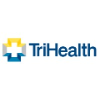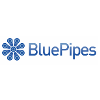PURPOSE OF POSITION As defined by the#American#College#of Surgeons (ACS), the Surgical First Assistant provides aid in exposure, hemostasis, and other technical functions that will help the surgeon carry out a safe operation with optimal results for the patient.
This role will vary considerably with the surgical procedure, specialty area, surgeon, and type of facility. # RESPONSIBILITIES # EXPECTATIONS Preoperative Duties Performed to Assist the Surgeon for Maximum Patient Care, Safety, and Economy of Time # 1.
STERILE TECHNIQUE : A.## Perform the appropriate preoperative skin scrub for the particular procedure ##### and circumstance.
B.## Demonstrate the understanding of aseptic technique and sterile vs. ##### non-sterile areas. C.## Display surgical conscience for the safety of the patient, other employees ##### and themselves.
D.## Wear appropriate barriers as outlined in the Infection Control Manual for ###### protection against blood and body contamination of patient and self.
2.## PREOPERATIVE PREPERATION OF THE PATIENT ########### A.## Demonstrate timely movement of the patient to the OR.######## ############## ########### B.
Properly identifies the patient : ####################### 1.## Verbally check with the patient (patient name, surgeon, ############################# and procedure) ####################### 2.
Visually checks the ID band, chart, surgery schedule and bed tag. ####################### 3.## Display a professional and courteous manner while reassuring## ############################# the patient that asks questions;
give support to the patient. ####################### 4.## Respect the patient#s confidentiality.# ########### C.## Facilitate voluntarily in an assistant or non-assistant room, and work ################# efficiently with the OR team, performing duties in an efficient and safe ################# manner, proceeding smoothly throughout the day.
D.## Collect and properly display the appropriate x-rays.################### ########## E.## Properly measure patients for intra-operative procedures.
F.## Review patient chart.######################################################################## ###### G.
Assist anesthesia under direct supervision, if time permits.######## ########### H.# Properly bi-valve any cast that needs to be removed, having patient#### #### #safety in mind at all times.
I.## Position the patient properly, being aware of and padding areas that##### #### require special protection, making adjustments for surgeon#s preferences.
J.## Prepare and properly perform surgical preps and urethral catheter insertions. ####################### 1.
Routinely inspects the surgical site to insure that a proper shave ####################### ##### prep was performed according to the type of surgery and ####################### ##### surgeon#s preference.
2.## Routinely verify any patient allergies and changes the prep ####################### ##### solutions accordingly.
3.## Display knowledge of the surgeon#s preferences and prepare ####################### ##### the prep tray in a sterile, economical, and uniform manner with the ####################### ##### supplies needed.
4.## Ready to insert the catheter and / or perform the skin prep when ############################# anesthesia permits.
5.## Following skin preparation, checks that there is no pooling of ########################## ##################fluids beneath the patient or near the Bovie pad.
INTRA-OPERATIVE : The Ability to First or Second Assist Any Surgeon on Any Case With Minimum Difficulty # 1.## KNOT TYING ########### a.
Knots are square, secure and they approximate the tissue, do not slip, and have ################# the correct number of knots required for that particular tissue.
b.## Is familiar with tensile strength using appropriate tension for the ################# type of suture. ########### c.
Demonstrates dexterity and knowledge of one handed and two handed ties, ################# surgeon#s knot, and instrument ties in a smooth and efficient manner.
2.## EXPOSURE OF INCISIONAL SITE ########### a.## Demonstrates skill and knowledge of maintaining hemostasis by proper use of ## ###############pressure, clamps, ties, suture ligatures, clips or electrocautery according to ################# surgeon#s preference.
b.## Provides and maintains the proper exposure necessary to perform the ################# operative procedure while protecting vital organs, tissues and other structures.
c.## Sponges and suctions at the appropriate time without interfering with the flow ################# of the surgery in order to allow a clear and unobstructed view of the ################# operative field.
3.## KNOWLEDGE OF EQUIPMENT AND INSTURMENTATION ########### a.## Demonstrates the proper use of equipment in a smooth, safe, and ################# efficient manner.
b.## Demonstrates proper use of instrumentation at the field : ####################### 1.## Selects appropriate instrument according to need and ############################# doctor#s preference.
2.## Operates instrumentation in a smooth, safe, and efficient manner to ############################# achieve the desired result.
c.## Practices care and economy in the use of equipment and materials.####### # 4.## CUTTING SUTURE ########### a.
When cutting suture, the assistant demonstrates promptness, proper #### ########### ###### handling of scissors, and safe cutting techniques.
b.## Assistant displays ability to adjust cutting length to various sutures################## ##### # ################# and doctor#s preference.
5.## WOUND CLOSURE ########### a.## Assistant closes the proper anatomical layers with the appropriate type ########### ##### of suture and stitch according to the surgeon#s preference.
b.## Demonstrates knowledge of suture material, various types of stitches, # ########### ##### and properly closes the incision in a smooth and efficient manner ########### ##### according to the surgeon#s preference.
c.## Applies the appropriate dressing for the procedure and according to##### ########### ##### surgeon#s preference.
6.## ANTICIPATION OF THE SURGEON#S NEEDS ########### a.## Assistant follows the pace set by the surgeon, and without delay in the# ########### ##### thought process, participates in the procedure to maintain a smooth ########### ##### and efficient flow of the operation.
b.## Displays knowledge of the different routines, procedures and anatomy ########### ##### which enables anticipation of the surgeon#s needs.
EXTRA-OPERATIVE RESPOSIBILITIES # 1.## Maintains a Professional Working Relationship with Staff and Physicians. ########### a.
Changes behavior in response to guidance. Collaborates, communicates, and works ######################### ################# harmoniously with peers and other departments.
c.## Observes own verbal and nonverbal communication and selects proper ########### ##### communication techniques.
d.## Demonstrates awareness of team responsibility by accepting additional ########### ##### duties and responsibilities to improve the SA department, OR and####### ########### ##### Aultman Hospital.
Works harmoniously with other health care personnel in the adjustment of ##### duties in a team like fashion as necessary to attain patient care goals.
f.## Establishes a professional rapport with physicians.################################# 2.## Self Responsibility and Accountability for Own Practice ########### a.
Remains current with changes by promptly attending meetings, inservices, and ################# reading meeting notes. ########### b.
Gives and attends department inservices willingly and professionally.## ########### c.## Demonstrates a cooperative attitude toward improving the department#s ################ #standing in the OR, hospital, and community.
d.## Openly receives criticism and strives toward improvement.################### ##### ########### e.
Demonstrates calm and reasoned judgment in an emergency.################ ########### f.## Recognizes the need for emergency procedures, and implements ### ##############accordingly.
e.g. patient in distress) ########### g. Willingly complies with JCAH regulations concerning CPR standards. 3.## Adheres to Departmental Policies and Procedures########## ########### a.
Accountability ####################### 1.## Assistant is dressed and ready to work at the start of their shift. ####################### 2.
When ill, calls off at least one hour before their shift is to begin.########### ####################### 3.## When on call, the assistant is at the OR table within thirty minutes or ############################## less after being notified.
4.## When leaving the department, the assistant routinely lets the Charge ############################## SA know of their whereabouts and remains within the overhead# ############################## paging system or is available by beeper.
b.## Time sheets and beepers. ####################### 1.## Posts worked times daily at the beginning and end of the shift.
c.## Dress code ####################### 1.## In the OR, the assistant maintains a professional appearance##### ####################### ##### by wearing clean scrub clothes, has the appropriate hair covering ########### ####### ### ######and limits the amount of jewelry and colognes.
Outside the OR, the assistant maintains a professional appearance by ###### wearing a clean white lab coat, no mask or shoe covers and has the ###### proper identification badge.
d.## Communication ####################### 1.## Notifies the Unit Director when a call change is made.############## ####################### 2.
Informs the Charge SA of any changes with the daily schedule.############ e.## Is familiar with and adheres to the Aultman Employee Handbook.
4.## Shows Flexibility in Working Hours and assist the department with any task or duty################ ##### delegated to them within their educational ability.
Manages equipment within the OR. ##### ######################################### 5.## Charge Responsibilities ########### a.
Assigns assisting staff according to need and skill level.######################## ########### b.## Communicates with surgeons, staff, charge nurse, anesthesia, and the Unit ################# Director of any status or problem areas.
Communicates with the next shift about the status of the department and any ###### information on patient, equipment, staffing or procedure changes.
Checks and makes assignments on the tentative schedule, notifying the Unit ##### Director of any potential scheduling or staffing problems.
Job Requirements # 1.## Associate Degree in Surgical Assisting or NSAA Certification preferred. 2.## Completion of Accredited Surgical Technician First Assistant preferred.
3.## Completion of Accredited RN First Assistant Program preferred. 4.## Ability to work under pressure. 5.## Motor coordination for rapid and accurate hand movement in response to visual and ##### audio stimulation.
6.## Must be able to take call. # All qualified applicants will receive consideration for employment without regard to#race, color, religion, sex, age, national origin, disability, or veteran status.
WORKING CONDITIONS : 7 : 00 # 3 : 30 pm M-F or hours as required by the job. Occasional weekends and off -shifts Subject to frequent interruptions and changes in priority of duties throughout the day.
Sitting / standing / moving about during working hours#









